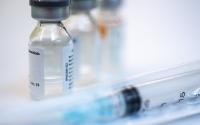[ad_1]
Editor’s Note: This story was updated at 4:00 pm CST, adding in the second, unpublished, study.
SARS-CoV-2 antibodies transferred across the placenta in 87% of pregnant women who had COVID-19 at some point, suggesting that newborns of seropositive mothers may have some protection against the novel coronavirus at birth, according to a study today in JAMA Pediatrics. However, a second, unpublished study suggests that the maternal-infant antibody transfer is lower than expected.
Table of Contents
IgG but not IgM in cord blood
In the first study, a team led by researchers from Children’s Hospital of Philadelphia collected discarded maternal and cord blood sera from 1,471 mother-newborn pairs with available sera for measurement of anti-spike protein immunoglobulin G (IgG) and immunoglobulin M (IgM) at Pennsylvania Hospital from Apr 9 to Aug 8.
IgG and/or IgM antibodies were detected in the sera of 83 of 1,471 women (6%) at delivery, and IgG was found in cord blood from 72 of 83 of the newborns (87%). Concentrations of IgG antibodies in cord blood were positively correlated with the mothers’ IgG levels, and high rates of placental antibody transfer were seen both in women who experienced no COVID-19 symptoms and in those with mild, moderate, and severe illness.
No IgM antibodies were found in cord blood. Most mothers were asymptomatic, and no cases of newborn COVID-19 infection were identified.
While SARS-CoV-2 antibodies weren’t identified in infants born to mothers without antibodies, 11 newborns of seropositive mothers showed no evidence of antibodies, 5 of them (45%) whose mothers had only IgM antibodies and 6 (55%) whose mothers had significantly lower levels of IgG antibodies than those in mothers of seropositive newborns. Antibody transfer ratios increased with increasing time between onset of infection in the mother and delivery and were not affected by preterm birth.
The authors said their findings show that maternally derived SARS-CoV-2 antibodies may help protect infants from infection, as well as inform both neonatal care guidance and the design of vaccine trials in pregnant women.
“Further studies are needed to determine if SARS-CoV-2 antibodies are protective against newborn infection; if so, at what concentration; and whether the transplacental kinetics of vaccine-elicited antibodies are similar to naturally acquired antibodies,” the researchers wrote.
Second-trimester vaccination may be optimal
In a commentary in the same journal, Flor Munoz, MD, of Baylor College of Medicine, said that understanding the disease-preventing potential of immunization during pregnancy is important now because vaccination of pregnant women with COVID-19 vaccines in development has begun in the United States.
“While transplacental transfer ratios may vary, it is reassuring that maternal infection, whether symptomatic or asymptomatic, results in sufficient antibody production for an efficient transplacental antibody transfer to newborns of infected mothers, because maternal vaccination could do the same,” Munoz wrote.
Because placental antibody transfer begins at about 17 weeks of gestation and rises exponentially from then on, vaccinating mothers early in the second trimester might be optimal to achieving high antibody levels in newborns, she said. “While a serologic correlate of protection against SARS-CoV-2 infection and symptomatic or severe disease is unknown at this time, higher antibody levels might result in a better chance for protection of the newborn during a period of special vulnerability,” Munoz said.
She called for research into the kinetics, duration, and neutralizing effectiveness of maternally derived SARS-CoV-2 antibodies in infants, whether antibodies can also be transferred during breastfeeding, and if and when to vaccinate newborns against the virus.
“While maternal immunization is likely the best available option to protect both pregnant and lactating mothers as well as their infants during the COVID-19 pandemic, the importance of collecting data to answer these outstanding questions cannot be overemphasized,” Munoz concluded.
“Critical information needs to be collected through carefully designed prospective or longitudinal clinical studies to inform and implement safe and effective maternal and infant vaccination strategies.”
Lower-than-expected transfer
The second study, the results of which were presented yesterday at the Society for Maternal-Fetal Medicine’s (SMFM’s) annual meeting, involved analysis of maternal and cord blood samples from 32 women who tested positive for COVID-19 during pregnancy.
All maternal samples contained IgG antibodies, and 94% had neutralizing antibodies, while 91% of the cord blood samples contained IgG, and 25% had neutralizing antibodies.
When the researchers stratified the study sample based on time from positive SARS-CoV-2 test to delivery, there were no significant differences over time in the levels of IgG and IgM in the maternal or cord blood samples. Neither were there significant differences in testing when the mothers were asymptomatic versus symptomatic, although all cord blood samples with detectable IgM antibodies were from women with symptoms.
Coauthor Naima Joseph, MD, MPH, a maternal-fetal medicine fellow at Emory University, told CIDRAP News in an email that her team expected to see higher ratios of antibody transfer because other pathogens, such as those that cause pertussis and flu, have ratios higher than 3.
“For us, seeing <1 is not as high as what we know the placenta can do,” she wrote. “We are not saying that this confers reduced protection to the neonate, as that is not known. But we are seeing less than what has been seen in other infections.”
Coauthor Martina Badell, MD, also of Emory, said in an SMFM news release, “The next step is to understand why antibody transfer is different in COVID-19 infection from other infections and whether the transfer of these antibodies increases when we vaccinate a pregnant woman.”
[ad_2]
Source link












